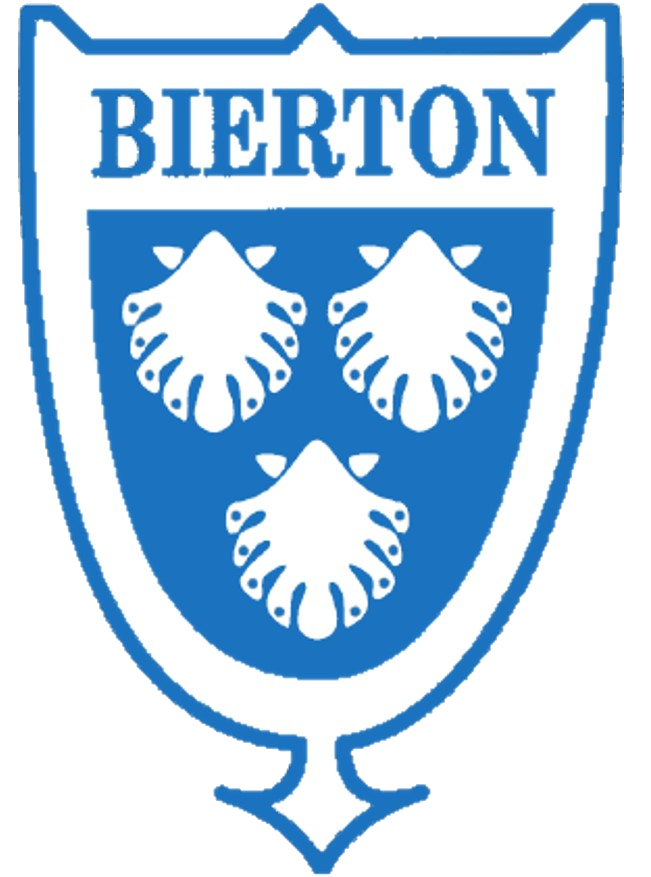Art
Intent
At Bierton CE Combined School, we aim to give children a wide range of experiences in Art, to develop their curiosity, creative and practical skills. The intent is to ensure pupils have opportunities to use their creativity and imagination, use a variety of tools, materials and medium to develop different techniques. The children will become confident and proficient in these techniques which include drawing, painting, sculpting, as well as other craft skills. They will also learn to explore their own ideas, record their experiences, as well as exploring the work of others, learning to ask questions and evaluate. An awareness of colour, line, shape, balance, focus and proportion are developed alongside the use of symbols to convey ideas and feelings. This will help offer children the chance to develop their emotional expression through art to further enhance their personal, social and emotional development. The children are also taught to develop their appreciation of artists and art in other cultures and use techniques to develop their own artwork and to experiment with new ideas.
Implementation
High quality Art and Design is delivered to each child during one week of art each half term, taught by class teachers using a scheme called Kapow. Topics ensure coverage of the National Curriculum and development of skills in drawing, painting, craft, design, materials and techniques and reflection. Through development and progression of skills the children also develop:
Imagination and Creativity: Children can take their experiences of the world and transform them through art, making new connections and relationships through their inventive minds. Their knowledge, memories and fantasies all feed their imagination. Art allows children to explore, build on and record their own creative and imaginative ideas.
Expression: Making pictures allows children to express their feelings and ideas, both as a means of self-expression and to communicate to others. These may include reliving a happy event they recently experienced (a birthday party or a day out), or drawing out some sad feelings as a therapeutic exercise. Older children may use pictures for more conceptual purposes, expressing their concerns and ideas.
Visual Thinking: Pictures encourage us to think about and understand the world visually, instead of restricting learning and the acquisition of knowledge to words and numbers alone. Visual thinking helps children learn other subjects. It is a skill used in a wide variety of professions, including the sciences as well as the arts.
Observational Skills: Making pictures helps children observe the subject matter of the real-world scene they are drawing from more closely, and makes them better observers of detail in the world around them. Developing observational skills through picture-making facilitates the child’s visual sensitivity to the world.
Problem Solving and Analytical Skills: Pictures enable children to explore and test out ideas, while making decisions on how they choose to depict them. For instance, children will learn problem-solving skills as they grapple with trying to create a three-dimensional scene from the world on a two-dimensional page. With practice, children learn that concentration and persistence allow them to get closer to the pictures they are trying to achieve.
Autonomy: A child’s picture is his or her own. It has worth in its own right, without having to be measured or judged by others as right or wrong. The child has the authority to say what the picture is of, or what it communicates, building up their confidence and self-esteem. At Bierton CE Combined School we also offer after school clubs in Art which reinforces learning and enjoyment.
We have chosen to teach Art and Design across the school using the lesson plans and resources from Kapow to ensure National Curriculum coverage and to enable children to have a wide range of experiences in Art and Design.
Impact
To ensure high standards of teaching and learning in Art and Design, we implement a curriculum that is progressive throughout the whole school. Art and Design is taught during one week per half term, focusing on knowledge and skills stated in the National Curriculum. At Bierton, we are developing our Art curriculum to ensure that art and design is given the same importance as the core subjects, as we feel this is important in enabling all children to gain ‘real-life’ experiences. To this end, we are looking to engage Key Stage 2 pupils in an Art club that supports activities involving art in our school community such as scenery for plays, posters etc.
The children will have a chance to develop their techniques, including their control and their use of a range of materials, with creativity, experimentation and an increasing awareness of different kinds of art, craft and design. Children will also know how art and design both reflect and shape our history, and contribute to the culture, creativity and wealth of our nation. Studying a range of artists throughout the school will help to develop this and all children in KS1 and KS2 have sketchbooks which will show the progression and progress made.
Regular book scrutinies will be carried out to ensure coverage and implementation and also to observe progression of skills. Learning walks will also be carried out to observe teaching of skills and children’s enjoyment. Questionnaires for both teachers and children will allow feedback on the enjoyment of Art and of the Kapow scheme and also allow less confident teachers to raise areas for further support and guidance.
